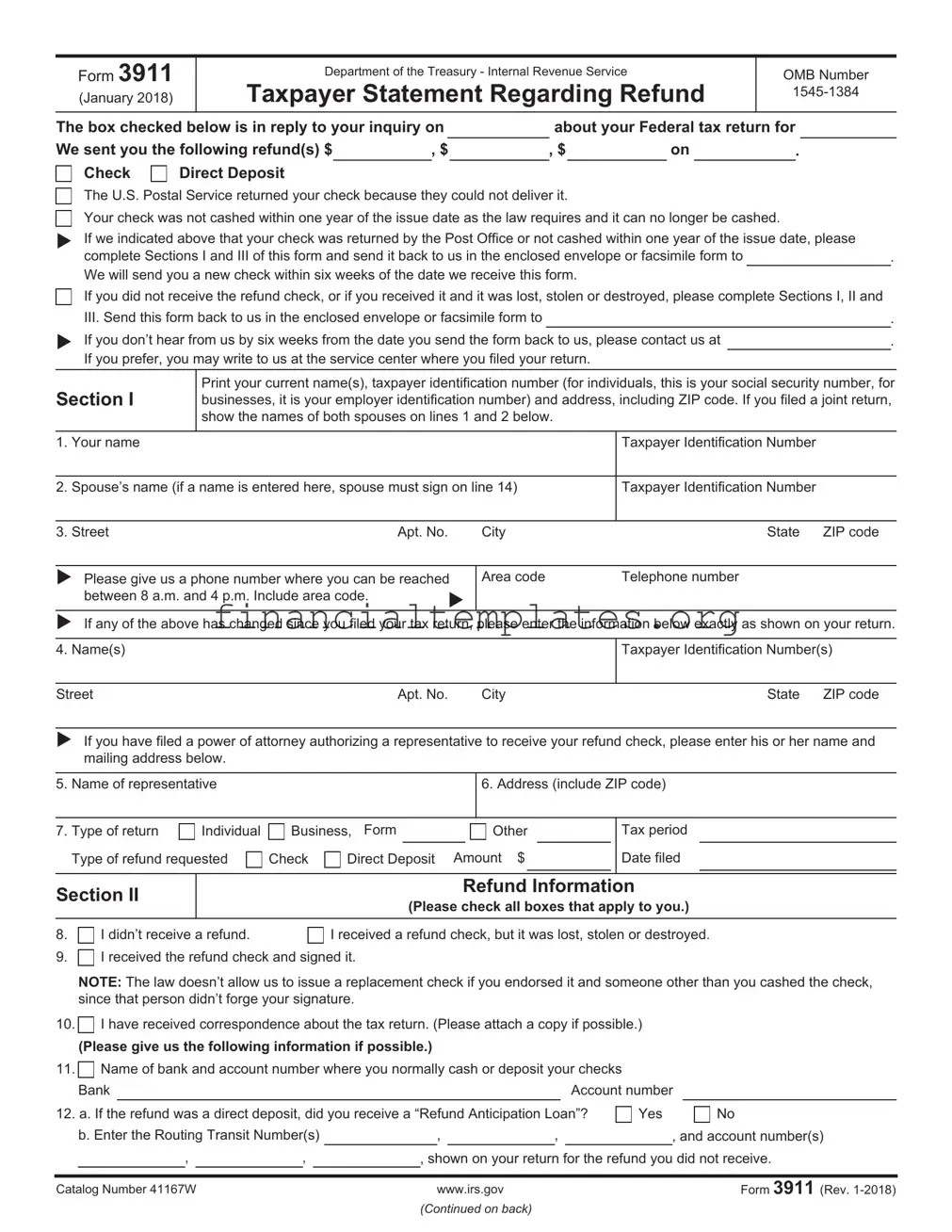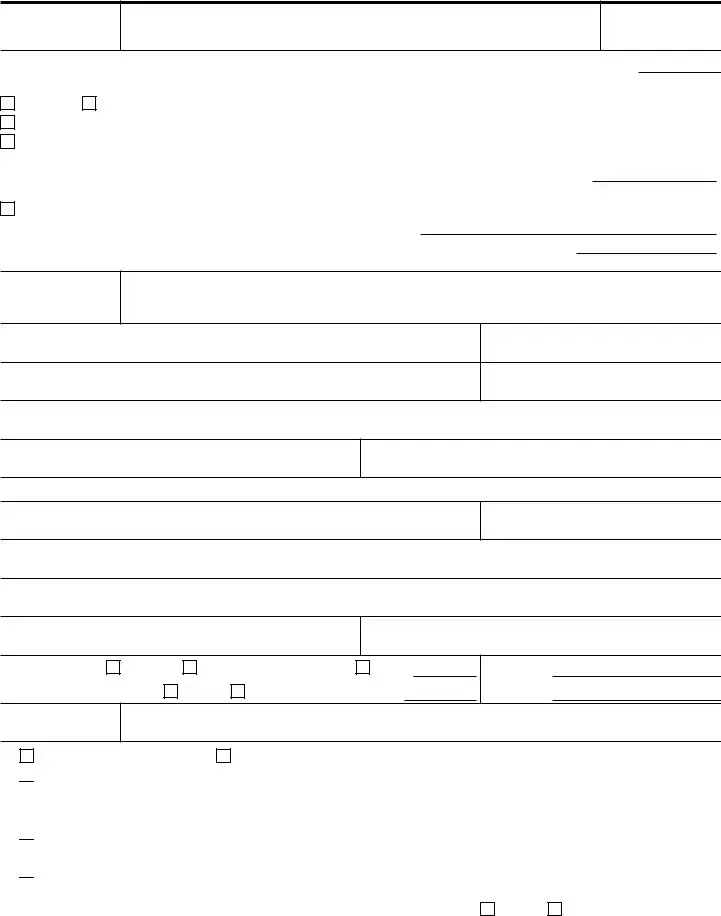The IRS 3911 form is used to trace a refund that hasn't been received, but there are several other forms and documents in the realm of tax and financial matters that share similarities in purpose or function. For instance, the IRS Form 8822, Change of Address, is akin to the IRS 3911 in that they both deal with the rectification or updating of personal information to ensure proper handling and receipt of vital documents and funds. While Form 3911 is targeted at locating missing funds, Form 8822 ensures the IRS has current information to prevent misdirection of funds or correspondence in the first place.
Form 4506-T, Request for Transcript of Tax Return, also shares similarities with IRS 3911. Both are used to obtain important tax-related information, but they serve different ends. The 4506-T is specifically used to request a transcript of a tax return from the IRS, which can be necessary for mortgage applications or financial aid. The IRS 3911, on the other hand, is used when the return or refund itself goes astray. Despite these differences, each form plays a crucial role in managing and rectifying tax records.
The W-9, Request for Taxpayer Identification Number and Certification, somewhat parallels the IRS 3911 form in its role in ensuring the proper allocation and reporting of funds. However, the W-9 is primarily used by employers or entities that pay individuals for services rendered to ensure they have the correct taxpayer identification number (TIN) for reporting purposes. While the IRS 3911 seeks to find where money sent by the IRS went, the W-9 helps prevent issues with misreported earnings from the start.
Similar in spirit to the IRS 3911 form is the Form 1040-X, Amended U.S. Individual Income Tax Return. This form is used when an individual needs to correct a previously filed Form 1040, 1040-A, or 1040-EZ. Like the 3911, the 1040-X addresses discrepancies and ensures accuracy in taxpayer records, albeit from the perspective of amending errors or omissions in previously filed information rather than tracing missing refunds.
Form 4868, Application for Automatic Extension of Time To File U.S. Individual Income Tax Return, shares the IRS 3911 form's intent to prevent or rectify delays, although in a different context. Form 4868 is used to formally request additional time to file one's taxes, essentially preventing the kind of issues that might later require a 3911 form to solve, such as delays in refunds due to late filing.
Lastly, Form 9465, Installment Agreement Request, bears a resemblance to the IRS 3911 form in that both deal with the resolution of payment-related issues. However, Form 9465 is used when a taxpayer cannot pay their due taxes in full and seeks to make installment payments. While the 3911 is concerned with the whereabouts of refunds sent out by the IRS, the 9465 addresses the incoming direction of taxpayer funds to the IRS, specifically how they can be structured over time to resolve tax liabilities.
In sum, while each of these forms and documents serves a unique purpose within the complex machinery of tax administration and personal finance, they all share the IRS 3911 form's fundamental objective of ensuring accuracy, timeliness, and fairness in financial and tax-related matters.


 I received the refund check and signed it.
I received the refund check and signed it. I have received correspondence about the tax return. (Please attach a copy if possible.)
I have received correspondence about the tax return. (Please attach a copy if possible.)
 Name of bank and account number where you normally cash or deposit your checks
Name of bank and account number where you normally cash or deposit your checks